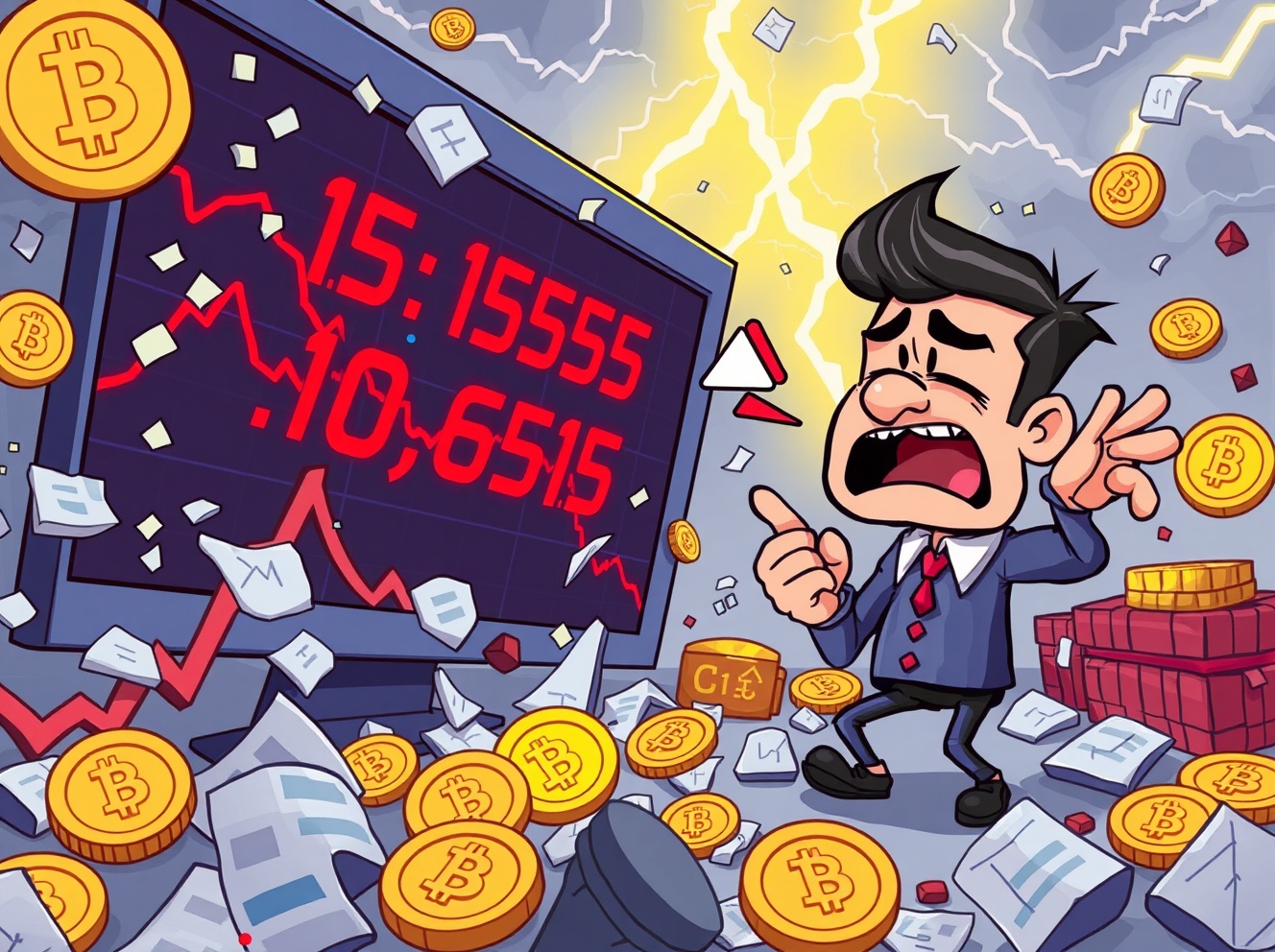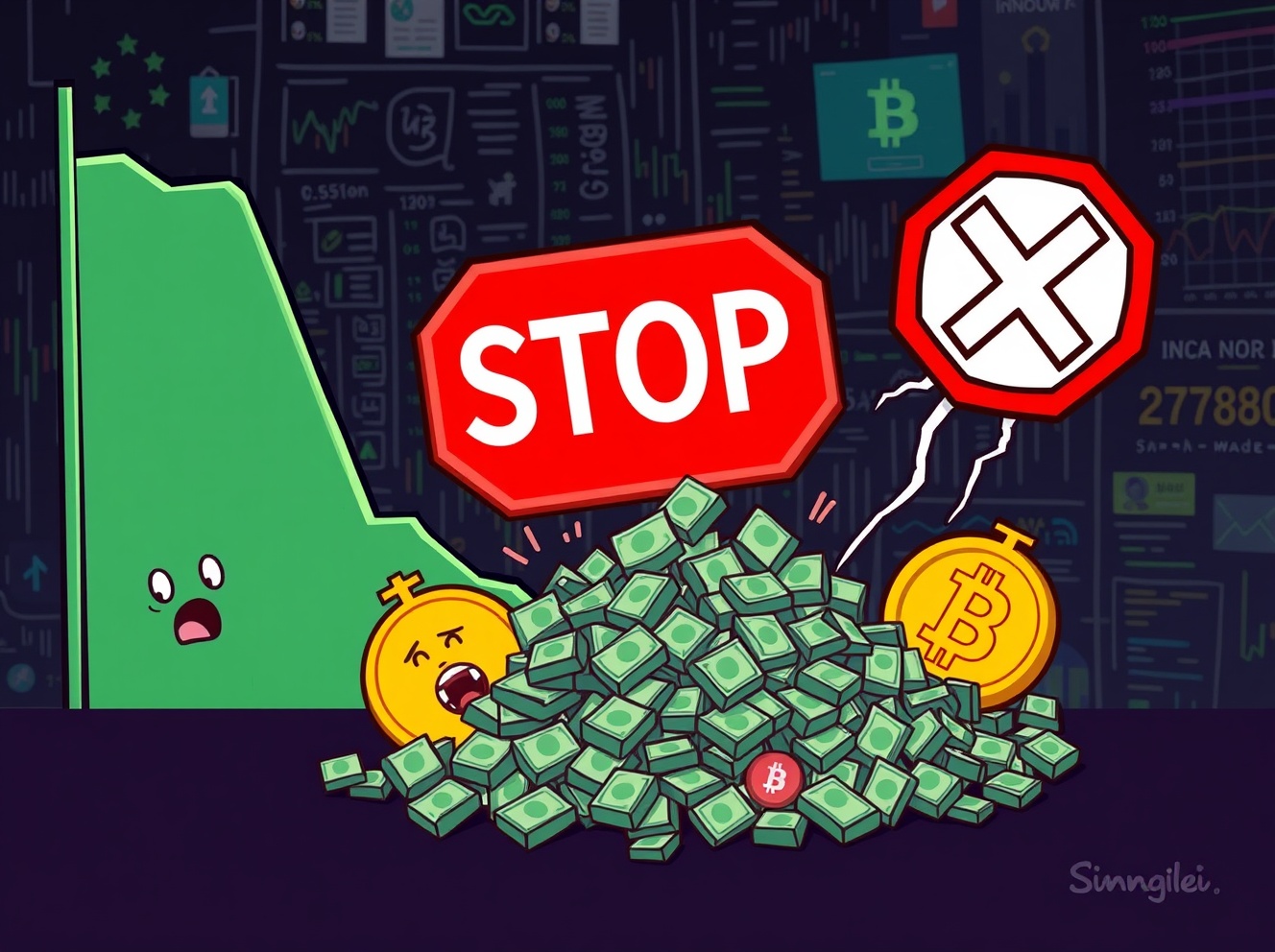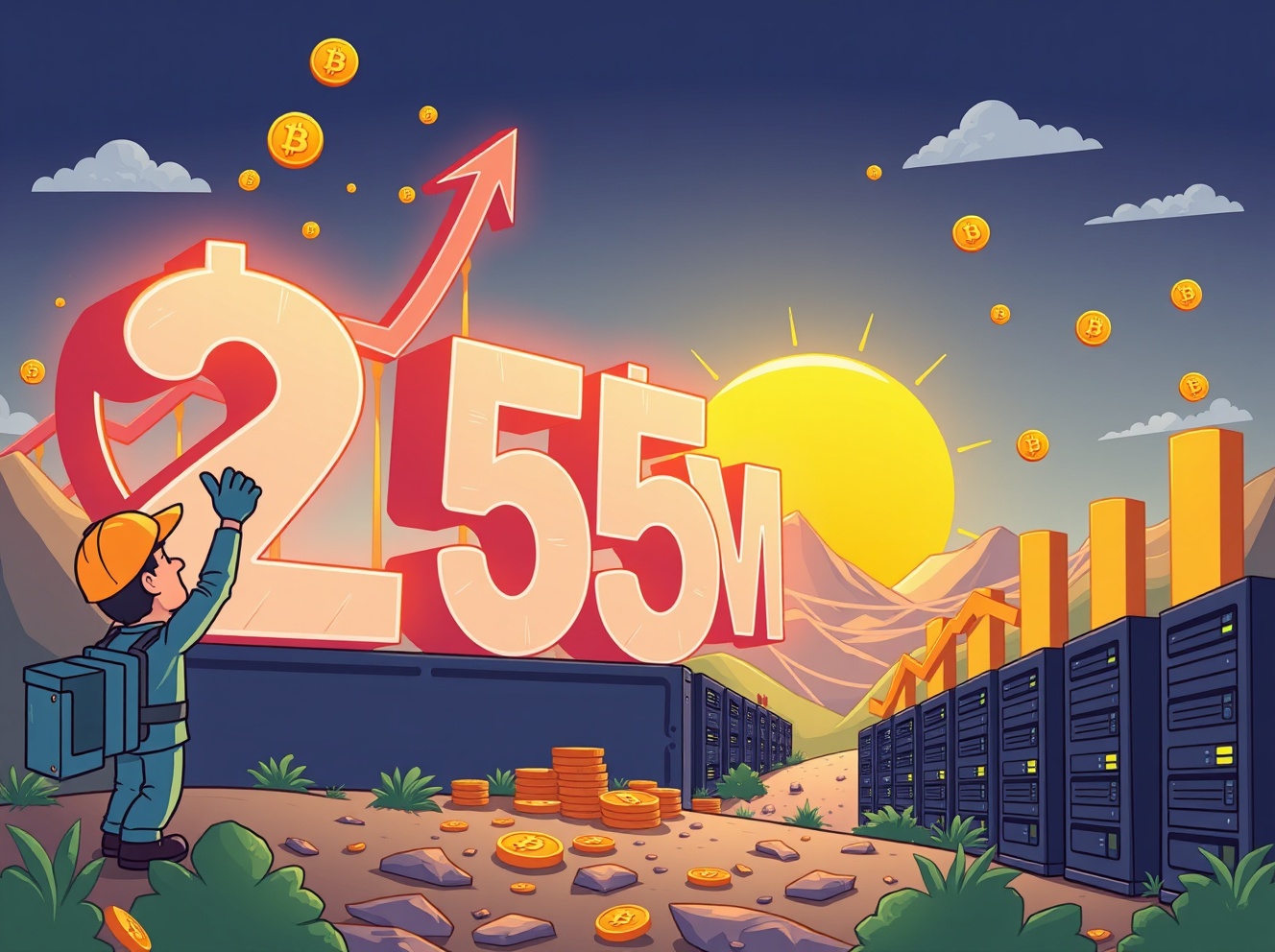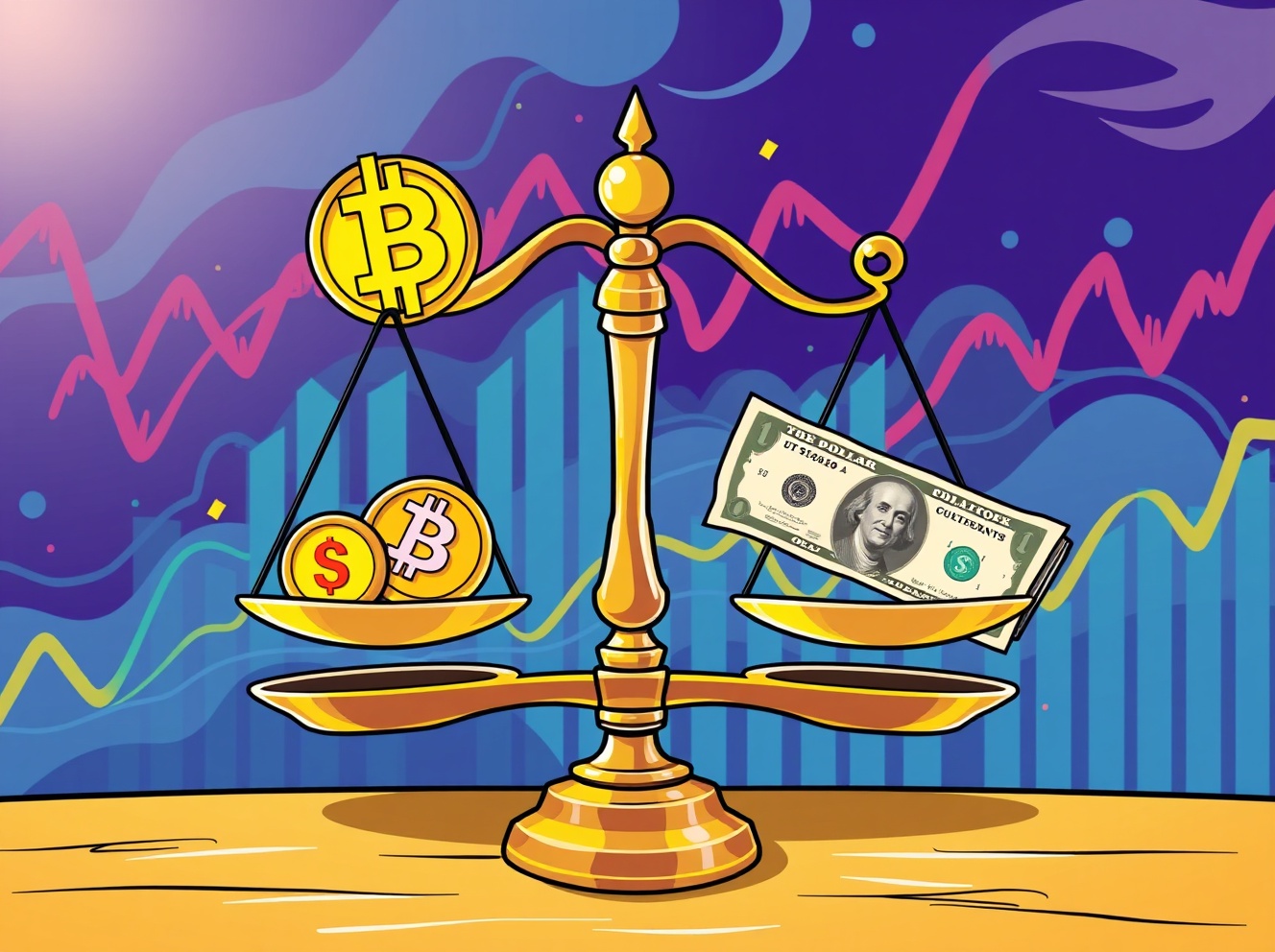
Pi Squared has announced the launch of its Devnet 2.0 to bring “internet-speed payments” to Web3 and advance its goal of 1 million transactions per second (TPS) by 2026. Related Reading: Bitcoin Eyes ‘Moment Of Truth’ As Price Retests $100,000 Support – Is The Rally Over? Pi Squared Unveils New Upgrade On Wednesday, Pi Squared, a project behind an infinitely scalable network for internet-speed payments, announced the launch of Devnet 2.0, a major upgrade to its Web3 verifiable settlement protocol. Notably, Pi Squared is building FastSet, an infinitely scalable, decentralized payments network designed to deliver “uncapped throughput, internet speed finality, and real-time verifiability.” The network settles transactions in parallel, which allows it to process more transactions per second than blockchains that rely on total ordering. In a September blog post, the project noted that TPS has been a key metric to evaluate the capacity, scalability, and efficiency of a credit card payment system. This metric was later adopted for the data transaction rate of cryptocurrencies, but “TPS may be discouraging to use as a metric in Web3 since there is so much heterogeneity and inconsistency around.” Pi Squared explained that, in the protocol, “TPS refers to the number of claims per second that can be effectively settled. Transactions are a typical example of claims, but FastSet is more than just settling transactions. Any verifiable statement can be settled on FastSet.” According to the official statement, the Web3 verifiable settlement protocol currently reaches 150,000 transactions per second with sub-100ms finality. Additionally, it targets 1 million TPS by mainnet in 2026, aiming to deliver “instant and trustless payments at a global scale.” Grigore Roșu, founder and CEO of Pi Squared, affirmed that “the future of payments demands more than what blockchains can deliver.” Therefore, “with theoretically uncapped TPS, sub-100ms finality, and verifiability by design, Pi Squared is ready to power global payments and financial systems at scale.” A New ‘Playground’ For Web3 Developers Per the statement, Devnet 2.0’s launch advances the Pi Squared goal to build “a future where payments and all forms of transactions happen instantly, verifiably, and with negligible fees.” It detailed that the Devnet 2.0 is a “fully accessible playground for developers to experience FastSet in action, providing a richer ecosystem, new apps, improved infrastructure, and comprehensive developer docs designed to make building on FastSet seamless.” Within the next week, two Decentralized Finance (DeFi) applications, Omniset and OmniSwap, are set to debut on the Devnet 2.0, seeking to “redefine cross-chain asset movement.” The first one acts as a universal liquidity and settlement layer, connecting fragmented liquidity across blockchains into a single verifiable layer, rather than relying on traditional bridges. As a result, users will reportedly be able to “deposit tokens on any chain, mint and use the tokens unrestricted on FastSet, and withdraw them on any other chain, seamlessly, securely, and instantly.” Related Reading: Solana (SOL) Loses Key Support Amid 8% Drop, Risks Major Correction To This Level Meanwhile, the second DeFi application is built on top of OmniSet. It will aggregate decentralized exchanges (DEXs) across networks, discover the best available swap rates, and execute trades using verifiable proofs, to make cross-chain swaps “trustless and lightning fast.” Roșu concluded that the launch of Devnet 2.0 “represents the latest milestone in our mission to deliver on one of the biggest promises of Web3, enabling p2p payments to move as fast as the internet.” Featured Image from Unsplash.com, Chart from TradingView.com
NewsBTC
You can visit the page to read the article.
Source: NewsBTC
Disclaimer: The opinion expressed here is not investment advice – it is provided for informational purposes only. It does not necessarily reflect the opinion of BitMaden. Every investment and all trading involves risk, so you should always perform your own research prior to making decisions. We do not recommend investing money you cannot afford to lose.
Crypto Fear & Greed Index: Navigating Extreme Fear for Astute Investors
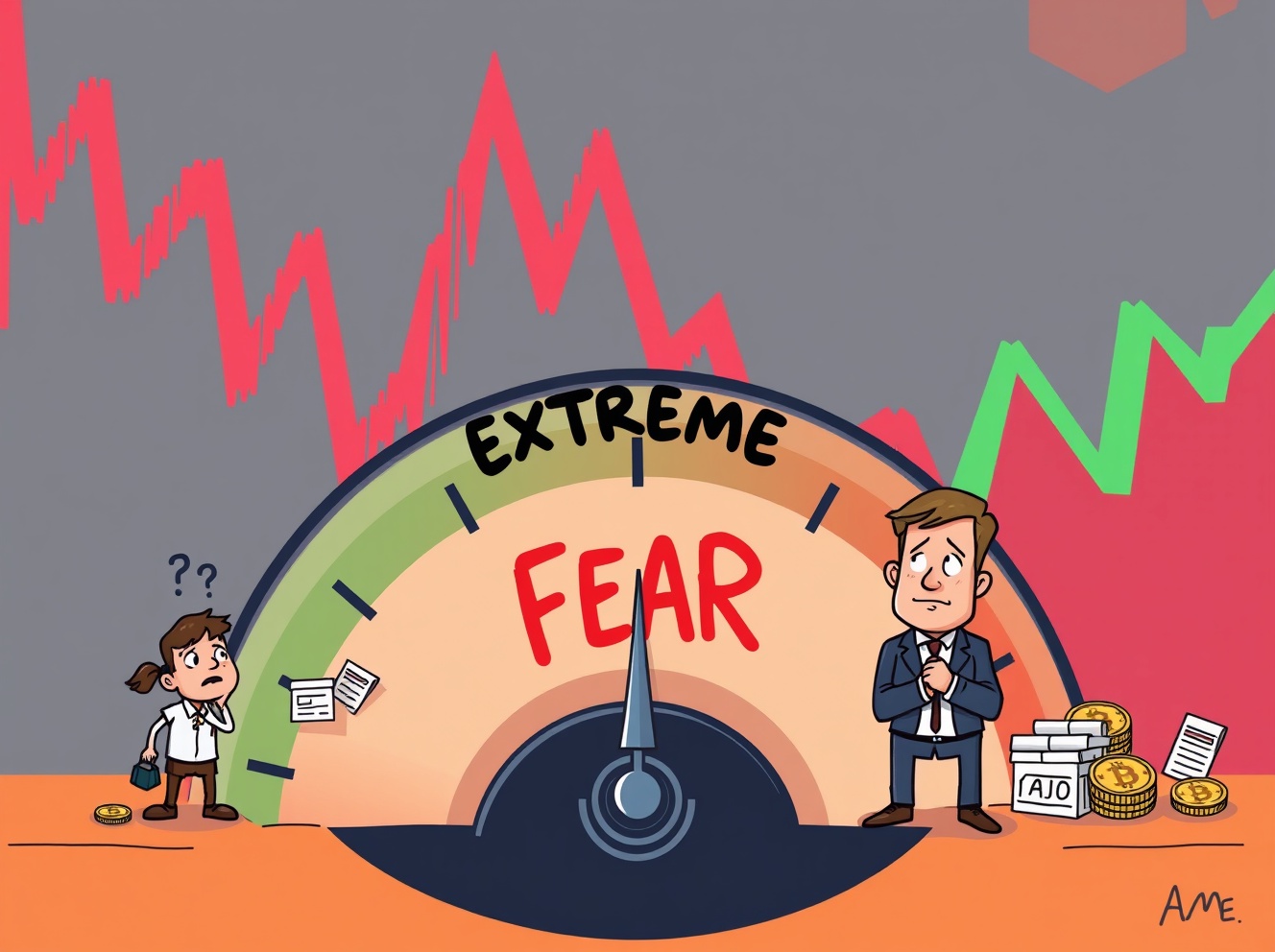
BitcoinWorld Crypto Fear & Greed Index: Navigating Extreme Fear for Astute Investors The cryptocurrency market often feels like a rollercoaster of emotions. Right now, the sentiment gauge, known as the Crypto Fear & Greed Index , is flashing a strong signal: extreme fear. Standing at 23, up slightly from yesterday but firmly within the “Extreme Fear” zone, this index offers a crucial snapshot of investor psychology. Understanding this metric can provide valuable insights for navigating the volatile world of digital assets. What is the Crypto Fear & Greed Index and How Does It Work? For those new to the crypto space, the Crypto Fear & Greed Index is a powerful tool. It measures current market sentiment on a scale from 0 to 100. A score of 0 signifies extreme fear, suggesting investors are highly anxious and likely selling, while 100 indicates extreme optimism, often a sign of overbuying. This index isn’t just a random number; it’s a sophisticated calculation. Alternative, a leading data provider, compiles this index using several key factors: Volatility (25%): How much the Bitcoin price fluctuates. Trading Volume (25%): The amount of Bitcoin being traded. Social Media Mentions (15%): The buzz around crypto on platforms. Surveys (15%): Polling investors directly (currently paused). Bitcoin’s Market Dominance (10%): Bitcoin’s share of the total crypto market cap. Google Search Volume (10%): How many people are searching for crypto-related terms. Each component provides a piece of the puzzle, helping to paint a comprehensive picture of the market’s mood. When the index dips into extreme fear, it often signals a potential buying opportunity for contrarian investors. Why Does the Crypto Fear & Greed Index Matter to Astute Investors? You might wonder, “Why should I care about market sentiment?” The truth is, emotions drive markets. The Crypto Fear & Greed Index acts as a valuable contrarian indicator. Legendary investor Warren Buffett famously advised, “Be fearful when others are greedy, and greedy when others are fearful.” This index helps pinpoint those exact moments. When the market is gripped by extreme fear, many investors panic and sell off their assets. This capitulation can push prices down, creating attractive entry points for those willing to take a long-term view. Conversely, when the index shows extreme greed, it might signal that the market is overheating, and a correction could be on the horizon. Using the Crypto Fear & Greed Index can help investors avoid emotional traps and make more rational decisions. What Does “Extreme Fear” in the Crypto Fear & Greed Index Truly Mean? Currently, with the index at 23, we are deep in the “Extreme Fear” territory. This isn’t just a number; it reflects widespread anxiety, uncertainty, and potentially even panic among crypto holders. It means many are likely selling, perhaps at a loss, due to concerns about further price drops or broader economic instability. For some, this represents a significant challenge, testing their conviction in digital assets. Historically, periods of extreme fear have often preceded significant market rallies. For example, during major market crashes, like those seen in 2018 or parts of 2020, the index plunged to single digits. While terrifying at the time, those periods eventually gave way to strong recoveries for Bitcoin and other cryptocurrencies. This doesn’t guarantee future performance, but it highlights a recurring pattern in market psychology. It’s a moment where conviction is truly tested. Actionable Insights: How to Navigate the Current Crypto Fear & Greed Index Reading? So, how should you respond when the Crypto Fear & Greed Index is signaling extreme fear? Here are some actionable insights: Avoid Impulsive Decisions: Don’t let fear dictate your actions. Panic selling often leads to regret. Consider Dollar-Cost Averaging (DCA): Instead of trying to time the market, consider investing a fixed amount regularly. This strategy can help you accumulate assets at a lower average price during downturns. Conduct Thorough Research (DYOR): Use periods of low sentiment to research projects with strong fundamentals. Understand their technology, team, and use cases. Rebalance Your Portfolio: Extreme fear can be an opportunity to re-evaluate your asset allocation and potentially acquire more of your conviction assets. Remember, the index is a tool, not a crystal ball. It provides context for market sentiment, but it should always be combined with your own research and investment strategy. In conclusion, the current reading of 23 on the Crypto Fear & Greed Index places the market firmly in “Extreme Fear.” While this can be unsettling, it also presents a potential moment of opportunity for astute investors who understand market cycles and are prepared to act contrary to the crowd. By focusing on long-term strategy, disciplined investing, and thorough research, you can navigate these challenging times and potentially position yourself for future growth. Don’t let fear paralyze your potential. Frequently Asked Questions about the Crypto Fear & Greed Index Q1: What is the Crypto Fear & Greed Index? A1: It’s a daily sentiment indicator for the cryptocurrency market, ranging from 0 (Extreme Fear) to 100 (Extreme Greed), calculated using factors like volatility, trading volume, and social media activity. Q2: How is the index calculated? A2: It combines data from volatility (25%), trading volume (25%), social media mentions (15%), surveys (15%), Bitcoin dominance (10%), and Google search trends (10%). Q3: Does a high Fear & Greed Index mean I should sell? A3: Not necessarily. A high “Greed” score (e.g., 80+) can signal an overheated market, which might precede a correction. It’s often seen as a contrarian sell signal, but should be used with other analysis. Q4: Is the Crypto Fear & Greed Index reliable for making investment decisions? A4: It’s a valuable psychological indicator, but not a standalone investment signal. It helps gauge market mood, which can inform contrarian strategies, but always combine it with fundamental and technical analysis. Q5: What’s the significance of Bitcoin’s dominance in the index? A5: Bitcoin’s dominance (its share of the total crypto market cap) indicates investor preference. Rising dominance in a fearful market might suggest a flight to safety towards Bitcoin, while falling dominance during greed could point to altcoin speculation. If you found this article insightful, please consider sharing it with your network! Your support helps us provide more valuable analysis and insights into the fascinating world of cryptocurrency. Spread the knowledge and help others understand market sentiment! To learn more about the latest crypto market trends, explore our article on key developments shaping Bitcoin’s price action. This post Crypto Fear & Greed Index: Navigating Extreme Fear for Astute Investors first appeared on BitcoinWorld . NewsBTC

Ripple Validator Addresses XRP Price Crash, Here’s What’s Really Happening
The XRP price crash this week has stirred up a lot of discussion in the crypto community, eliciting mixed reactions from key players and the broader crypto community. While XRP’s decline is undeniable, a prominent validator within the ecosystem has weighed in on the situation, arguing that the price decline is part of a larger market downtrend affecting all cryptocurrencies. XRP Price Crash Reflects Broader Market Struggles According to Vet, an XRP Ledger (XRPL) dUNL validator, the recent price drop in XRP should not be viewed in isolation. On Tuesday, November 4, he took to X social media to highlight that cryptocurrencies are currently facing a downturn. “Everything is red, not just XRP,” Vet said, stressing that XRP’s price crash is a broader reflection of ongoing turmoil within the crypto market . Vet believes that getting caught up in the endless debate that the XRP price action is a distraction from the bigger picture. Rather than being baited, he encourages XRP community members to use their time to expand their knowledge and insights into the crypto industry and XRP’s technology . The XRPL validator maintains an optimistic outlook for XRP, asserting that the market is “not going anywhere,” even with the recent crash and ongoing volatility. Notably, Grape, an XRP validator, shared similar thoughts. While acknowledging that XRP has definitely been affected by the widespread market decline, he agreed that now is not the time for pointless, heated arguments over the token’s price. Instead, he urged people to focus on the long-term vision, which is “building.” Currently, the broader crypto market crash has affected not just the XRP price, but Bitcoin and prominent altcoins like Ethereum , Solana, and others. With ongoing price pressure and corrections, it remains to be seen if optimism will continue to hold among analysts and crypto community members. Why The Crypto Market Is Experiencing A Bloodbath Looking beyond the XRP price, the entire cryptocurrency market is in a state of disarray, with sentiment at a record low. In the past 48 hours, crypto analyst Ray noted that $2.1 billion in crypto positions , both long and short, have been liquidated. This comes just a few weeks after the more than $19 billion liquidation event that took place on October 10. Within the last few days, Ethereum has dropped 14% in a single day, and BTC is trading at its lowest level in four months. At the time of writing, Bitcoin is priced slightly above $101,500, reflecting a 10.2% crash this week and a 2.8% slump in the past 24 hours. The XRP price, currently trading at $2.25, has also declined by more than 14% over the past week and by over 2% in the last 24 hours. The broader market crash has left many analysts and crypto traders concerned. Ash Crypto, a prominent analyst, has highlighted that $267 billion has been wiped ouat from the crypto market this week alone. With the market red across the board, the analyst calls this the “shittiest bull market ever.” Additionally, market sentiment is at a record low. Joao Wedson, founder and CEO of Alphractal, shared that negativity is at its highest point since April. He pointed out that such intense negative sentiment is often a signal of an imminent price bottom. NewsBTC




